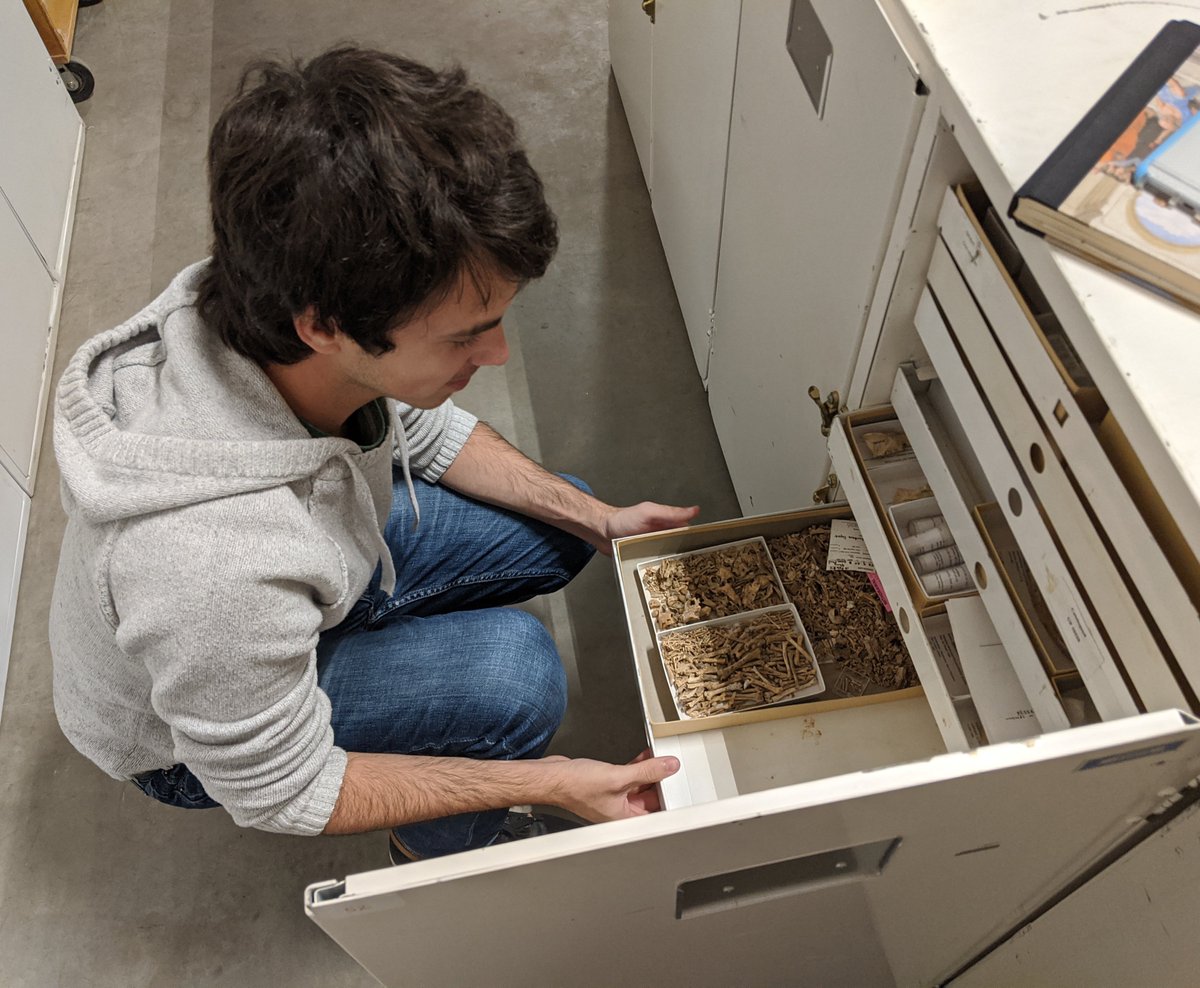
Mitchell Riegler
@manytinyteeth
Dallasite, Paleoherpetologist, Longhorn, Hokie, Gator. I like long walks in Wyoming deserts, and I always brake for lizards, dead or alive.
ID: 1189593108419231745
30-10-2019 17:21:25
23 Tweet
65 Followers
52 Following


Body armor from a giant armadillo-like pampathere who lived in Florida ~2 million yrs ago. They had 3 bands of overlapping osteoderms which made the shell flexible. Florida Museum Bloch Lab @UF #FossilFriday

Walruses in Florida?! 5 mya this freaking huge tusk belonged to the walrus, Ontocetus emmonsi. The tusk is an ever-growing modified upper canine #ToothTuesday Check out the species description of this now-extinct walrus bit.ly/2YY2fYC written by Sarah Widlansky


Excited for #SICB2020 in Austin? Come and check out our tooth-inspired Symposium (S3) Biology at the Cusp: Teeth as a Model Phenotype for Integrating Developmental Genomics, Biomechanics, and Ecology. Saturday 4th Jan, 8am - 330pm.🦷🔬 🦈🦖🐁🦎🦇🐡@SICBtweets Alexa Sadier


Happy New Year! Florida Museum #FossilFriday #Specimen2020 is a 4-5 Ma partial dental plate of the large eagle ray, Aetomylaeus. Collected in 1955 from Bone Valley Fm tinyurl.com/wr23rmt UF-VP specimen numbers will soon exceed 485000!



Astragalus of the giant ground sloth, Eremotherium (left, bit.ly/2NeUJEq), compared to that of the shovel-tusked elephant-relative, Amebelodon (right, bit.ly/2tRTBiT) Florida Museum #FossilFriday


Happy #MuseumSelfieDay from Vertebrate Paleontology Florida Museum and the mylodont ground sloth, hell pig, gomphothere, 6-horned pronghorn, sling-shot horn protoceratid>bit.ly/2TnqKxT, and the American alligator>bit.ly/2RxoRMD


Mastodon (cone-shaped cusps for crushing vegetation) vs. mammoth (flat teeth for grazing/grinding grasses) #FossilFriday Florida Museum more info > twilightbeasts.org/2014/07/14/the… TwilightBeasts

This bat petrosal (inner ear bone) was just discovered while sorting through fossil owl pellet matrix from Portland Cave, Jamaica (originally collected in 1953). Check out the exceptional 3D preservation of the semicircular canals! #FossilFriday Florida Museum



Florida Museum Jonathan I. Bloch Ed Stanley Rachel Narducci Mitchell Riegler @PaleoPirlo Michael Ziegler We jumped in the van and raced to the offsite storage. We began looking earnestly through Jamaican specimen cabinets until… “We found it” from team frog.


Florida Museum Jonathan I. Bloch Ed Stanley Rachel Narducci Mitchell Riegler @PaleoPirlo Michael Ziegler It’s a partial angulosplenial (upper) of the tree frog, Osteopilus, compared to a more complete one (middle) from the same locality in Jamaica. Those empanada look-alikes are compared to a more typical angulosplenial (lower) of the rain frog, Eleutherodactylus. #FossilFriday


In celebration of #DarwinDay, here is a rostrum of the bullfinch, Melopyrrha sp., collected in 1965 from late Pleistocene deposits in the Cayman Islands. These finches are endemic to the Caribbean and feed mostly on seeds, small fruits, flower nectar, and insects. Florida Museum



The Bloch Lab hard at work CT scanning, post-processing, and studying scanned fossil specimens on this lovely #FossilFriday Jonathan I. Bloch Rachel Narducci Mitchell Riegler



Check out Mitchell Riegler Mitchell Riegler's #2020SVP poster on Quaternary Cave Deposits of Jamaica: Regional Squamate Extirpation and First Record of Anuran Extinction in the Greater Antilles. Can you guess the fossils from the 'Guess Who' box in the poster?!


A single partial antler shed of an extinct Irish elk is larger than the entire skull plus antlers of a white-tailed deer. While Florida Museum vert paleo mostly houses FL fossils, we also acquire donations, including this one collected from the Netherlands #FossilFriday


The snake fossil record usually only includes vertebrae, but the Florida Museum haile site of central Florida has produced several articulated colubrid vertebrae, such as the column in my hands. Another was just CT scanned. Can you guess why there are two colors? #FossilFriday




